When it comes to buying a car, the price tag on the windshield is only part of the story. While many shoppers focus on getting a good deal up front, what often gets overlooked is how much the vehicle will cost to own in the long run.
Long-term ownership costs can make or break your budget—especially when you factor in expenses like insurance, routine maintenance, repairs, fuel, registration fees, and depreciation.
In fact, a vehicle that seems like a bargain initially can easily become a money pit if it requires frequent shop visits, guzzles gas, or loses value quickly. That’s why looking beyond the initial purchase price is not just smart—it’s essential.
The good news? There are plenty of cars out there that are built to go the distance, both mechanically and financially. Some vehicles are engineered with longevity, fuel efficiency, and low maintenance in mind, making them reliable companions that won’t drain your bank account over time.
These are the cars that combine practicality, durability, and affordability into one well-rounded package—and they tend to hold their value, too.
In this article, we’ve rounded up 10 cars with the cheapest long-term ownership costs, based on factors like reliability ratings, average maintenance and repair expenses, fuel efficiency, insurance premiums, and depreciation rates.
These are the vehicles that prove you don’t have to spend a fortune to get dependable transportation. Whether you’re a cost-conscious commuter, a student on a budget, or simply someone who appreciates financial peace of mind, these cars deliver long-term savings without skimping on quality or comfort.
1. Toyota Corolla
Why It’s Cheap to Own: The Toyota Corolla has earned a reputation for longevity and dependability.
Its simple, proven mechanicals translate to fewer breakdowns and lower repair bills. Fuel efficiency is impressive, and parts are widely available and affordable.
Ownership Perks:
- Excellent resale value
- Minimal unscheduled repairs
- Inexpensive insurance
Average 5-Year Ownership Cost: ~$30,000.
The Corolla remains the most affordable entry in Toyota’s 2025 lineup, starting at an MSRP of $22,325 for the base LE trim, not including the $1,135 destination charge. At the top of the gas-powered range is the XSE, the sportiest and most premium version, beginning at $28,040 plus destination.
Meanwhile, the Corolla Hybrid models, reviewed separately, range from $23,825 plus destination for the Hybrid LE to $28,190 plus destination for the Hybrid XLE. Positioned between the SE (the trim it’s based on) and the XSE, the new FX trim starts at $26,650 before destination fees.
The specific FX model tested came to a total of $29,289 with destination, due to a few select options. These included the Convenience Package for $530, a contrasting black roof for $500, a carpet mat package at $299, and Toyota’s Connected Services Trial, which costs $325 for three years of service.
The Corolla FX is available in Midnight Black Metallic, Ice Cap with the black roof (as equipped on the test car), and Underground, a dark gray tone that also includes the black roof. Additional styling elements include a black rear spoiler and gray metallic sport side rocker panels.
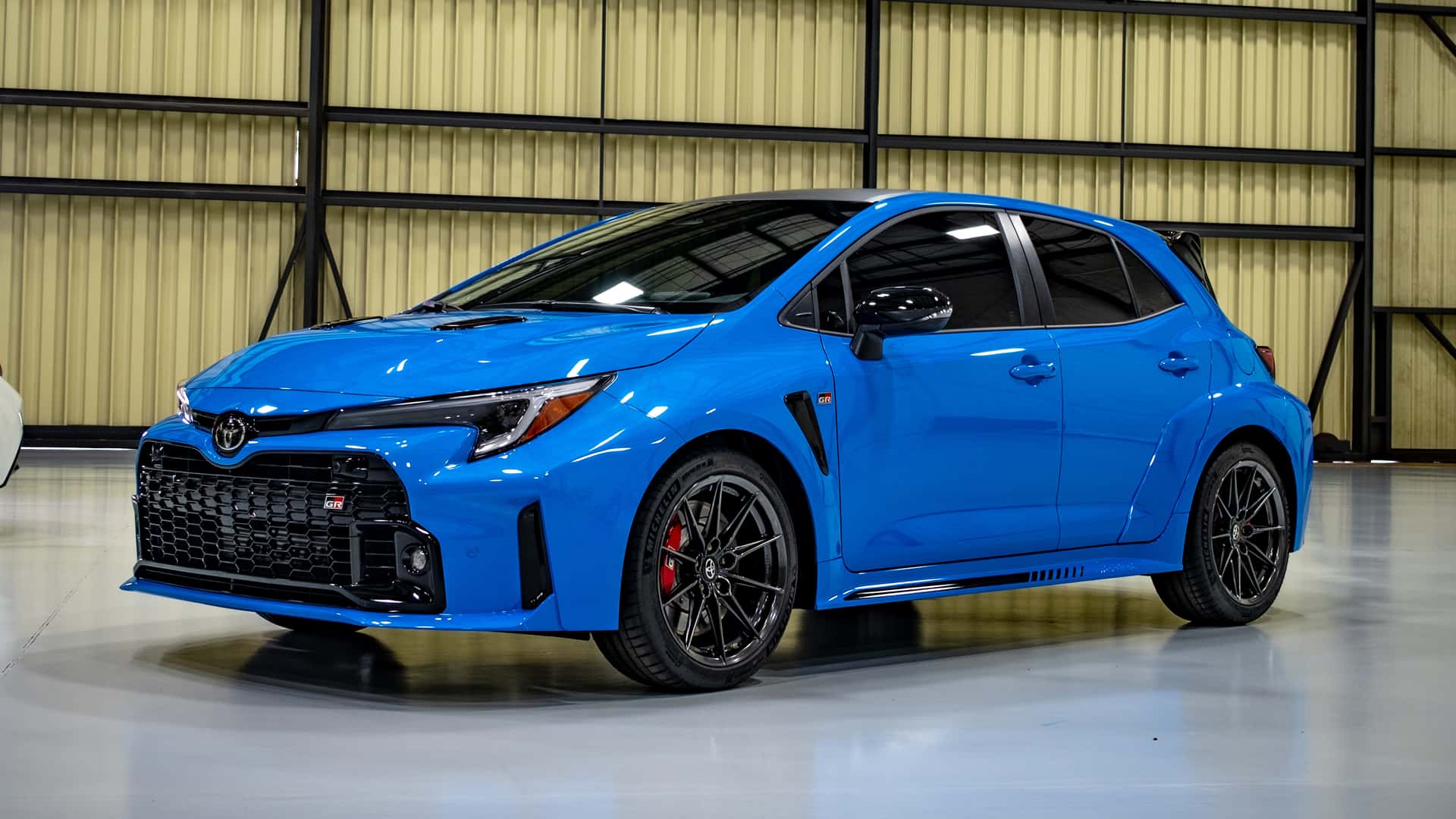
Under the hood of the 2025 Toyota Corolla FX—and indeed, all gas-powered Corolla models—is the same engine and transmission pairing found in other Toyota and Lexus models, such as the C-HR, Camry, Corolla Cross, and Lexus ES 200.
It’s the 2.0-liter M20A-FKS four-cylinder, connected to the K120 “Direct Shift” continuously variable transmission (CVT), which combines one actual gear with nine simulated ratios, creating a total of 10 gear points.
Output is uniform across the trims: 169 horsepower and 151 lb-ft of torque. Power is sent to the front wheels, which come as 16-inch steel wheels with covers on the LE trim and 18-inch alloy wheels on the SE, FX, and XSE trims.
Choosing the FX means you get 18-inch satin black alloy wheels with machined accents, which on the test model were wrapped in Dunlop SP Sport 5000 all-season tires. The suspension setup for SE through XSE trims consists of MacPherson struts and a stabilizer bar in front, and a multi-link rear suspension, while the base LE trim instead uses a simpler torsion beam in the rear.
Braking hardware is consistent across the board: 10.8-inch vented front discs and 10.2-inch solid rear discs. Altogether, this setup delivers exactly what the Corolla name has come to represent—an efficient, dependable ride that simply gets the job done.
Inside, things have improved, though the FX still reminds you that it’s an entry-level vehicle. If you remember the days of manually adjusting your seats—like in my old 1997 Toyota RAV4—you’ll find the Corolla FX keeps that tradition alive. It offers six-way manual adjustments for the driver and four-way adjustments for the front passenger.
Only the XSE trim includes an eight-way power-adjustable seat, and even that is limited to the driver. That said, the FX trim carries a consistent interior theme regardless of exterior color, showcasing a two-tone white and black interior accented by orange stitching.
Compared to the 2025 Prius Plug-In Hybrid I reviewed earlier, the Corolla FX’s cabin feels open and airy, with the white trim nicely complementing the Ice Cap paint on the outside. Forward visibility is excellent—almost on par with my aging Toyota crossover.
Also Read: Top 10 EV Features That Come in Useful in Daily Commute
2. Honda Civic
Why It’s Cheap to Own:
The Civic blends reliability with fun-to-drive dynamics and fuel efficiency. It’s backed by Honda’s stellar engineering, which keeps long-term repair and maintenance costs low.
Even older Civics hold up well mechanically and cosmetically.
Ownership Perks:
- High fuel economy
- Strong aftermarket parts availability
- Low-cost maintenance schedules
Average 5-Year Ownership Cost: ~$31,500
For buyers interested in how the Civic ranks among its peers, it currently holds the #1 spot in the “Best Compact Cars” list. With a starting price of $25,400, the Civic edges out the Toyota Prius, which starts at $29,485, and the Prius PHEV, which begins at $34,570.
It also beats out the Mazda 3 ($25,135), Volkswagen Jetta ($23,720), and Hyundai Elantra ($23,320). Shoppers can use our new compare tool to see how the 2025 Honda Civic stacks up directly against these and other vehicles in this segment.
For the 2025 model year, the Civic receives minor visual tweaks such as revised headlamps and a refreshed front bumper to distinguish it from the previous year’s design.
More significantly, the Civic Hybrid joins the lineup, offered optionally on the Sport trim and standard on the top-tier Sport Touring trim. The nonhybrid lineup is now limited to the LX and Sport trims and offered only with the naturally aspirated 2.0-liter engine.
The previous turbocharged 1.5-liter engine has been dropped, as has the manual transmission option for hatchback models. Stick-shift enthusiasts will need to look to the Civic Si or the high-performance Civic Type R, which retain manual gearboxes.
Pricing for the 2025 Honda Civic begins at $25,400 and ranges up to $34,300, depending on trim and configuration. The LX sedan starts at $25,400, followed by the Sport sedan at $27,400 and the Sport hatchback at $28,600. The Civic Hybrid sedan in Sport trim starts at $30,100, while the Sport Hybrid hatchback starts at $31,300.
The Sport Touring Hybrid sedan and hatchback are priced at $33,100 and $34,300, respectively. We recommend the Sport Hybrid sedan or hatchback for those who want the best mix of performance, efficiency, and features, though pricing for the hatchback may not yet be available.
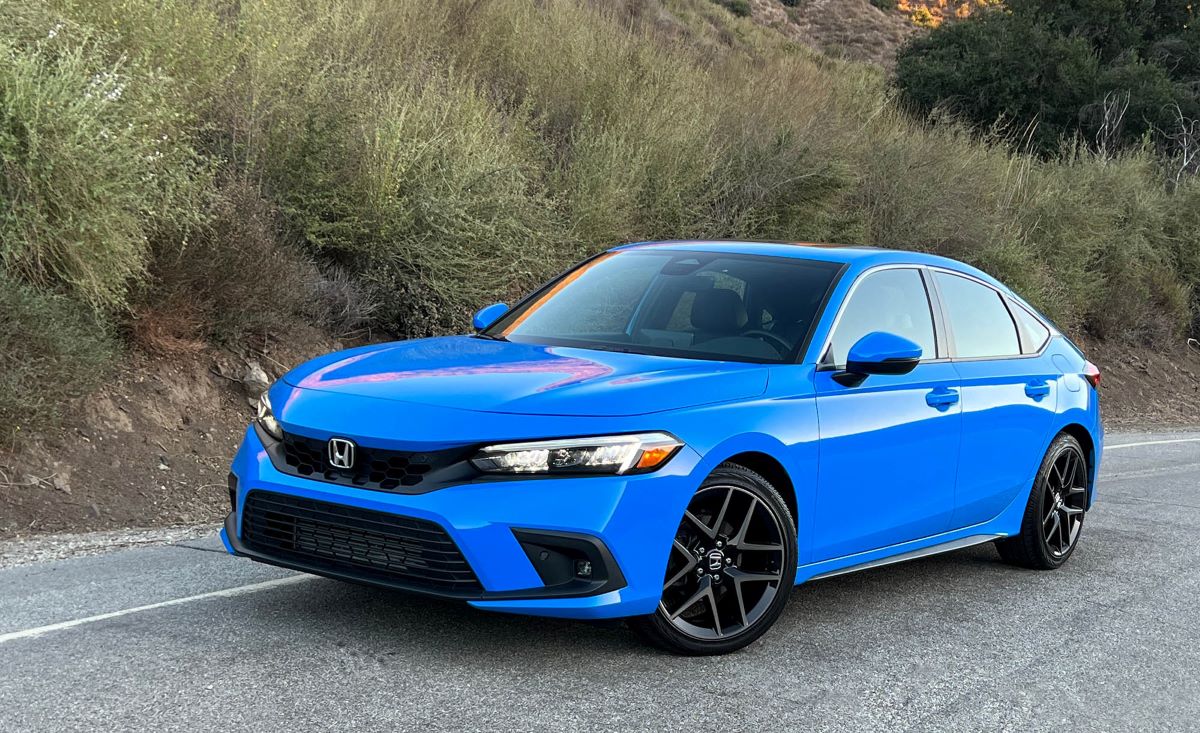
If you’re interested in comparing the 2025 Civic to other vehicles in the segment, our updated comparison tool allows you to evaluate up to five cars side by side for a comprehensive overview.
Under the hood, the Civic Hybrid features an electrified powertrain pairing a 2.0-liter four-cylinder engine with two electric motors for a combined 200 horsepower.
This setup is similar to the one used in the Accord Hybrid and CR-V Hybrid. However, unlike the CR-V, which offers available all-wheel drive, the Civic Hybrid is strictly front-wheel drive. It includes a driver-selectable regenerative braking system that helps recharge the battery, although it’s unclear whether full one-pedal driving is supported.
During our test drive, the Civic Hybrid impressed us with its smooth power delivery, quick response, and driving enjoyment that matched the outgoing Civic. The nonhybrid version comes standard with a 150-hp 2.0-liter engine, front-wheel drive, and a continuously variable transmission (CVT).
Although it’s less powerful than the previous base engine, it still feels lively enough for city driving. Honda has managed to preserve the Civic’s agile handling, responsive steering, and overall ride balance. For performance seekers, the Civic Si and Civic Type R remain part of the lineup and are reviewed separately.
In terms of acceleration, the Civic Hybrid sedan reached 60 mph in just 6.2 seconds during our testing—quicker than even the Civic Si. Meanwhile, a 2025 Civic Sport sedan equipped with the 2.0-liter engine needed 8.9 seconds to hit 60 mph.
Fuel economy is another strength. The Civic Hybrid sedan earns EPA estimates of 50 mpg city, 47 mpg highway, and 49 mpg combined. On our 75-mph highway fuel-economy test, the Sport Touring Hybrid sedan delivered 47 mpg.
Honda claims the nonhybrid models are slightly more efficient for 2025 than before, with the LX trim rated at 32 mpg city, 41 mpg highway, and 36 mpg combined. In a previous test of a 2022 Civic Sport sedan, we saw 36 mpg on the highway loop, so we’ll be interested to see how the 2025 model performs under the same conditions. For additional information on fuel efficiency, visit the EPA’s website.
Inside, the Civic remains practical and thoughtfully designed. Both sedan and hatchback body styles seat five passengers comfortably, and the rear seat provides adequate space for two adults. The interior design features clean lines, with a distinctive full-width honeycomb-pattern mesh that cleverly hides the air vents on the dash.
The center console offers plenty of storage, including a deep bin ahead of the shifter for storing smartphones, keys, or snacks. The Civic sedan’s trunk is spacious enough for grocery runs or weekend getaways, while the hatchback offers even more cargo capacity.
Infotainment features start with a 7.0-inch touchscreen display, while the Civic Hybrid can be equipped with a larger 9.0-inch screen and a 10.2-inch digital gauge cluster.
Both Apple CarPlay and Android Auto come standard, and wireless connectivity is included with the larger display. Optional features on the Hybrid models include in-dash navigation, a 12-speaker Bose audio system, and a wireless smartphone charging pad.
In terms of warranty, Honda’s coverage is average compared to competitors like the Hyundai Elantra or Kia K4, which offer more generous plans. The 2025 Civic includes a one-year or 12,000-mile complimentary scheduled maintenance plan.
Previous model years included a longer two-year/24,000-mile maintenance package. Honda’s limited warranty covers three years or 36,000 miles, while the powertrain warranty runs for five years or 60,000 miles. Hybrid components receive extended coverage for eight years or 100,000 miles.
3. Toyota Prius
Why It’s Cheap to Own: Despite its hybrid technology, the Prius is one of the most reliable and inexpensive cars to maintain.
Owners frequently report 200,000+ miles with minimal major repairs. The Prius’ incredible fuel economy often over 50 mpg also keeps costs low.
Ownership Perks:
- Best-in-class fuel economy
- Proven hybrid longevity
- Excellent resale value
Average 5-Year Ownership Cost: ~$28,000
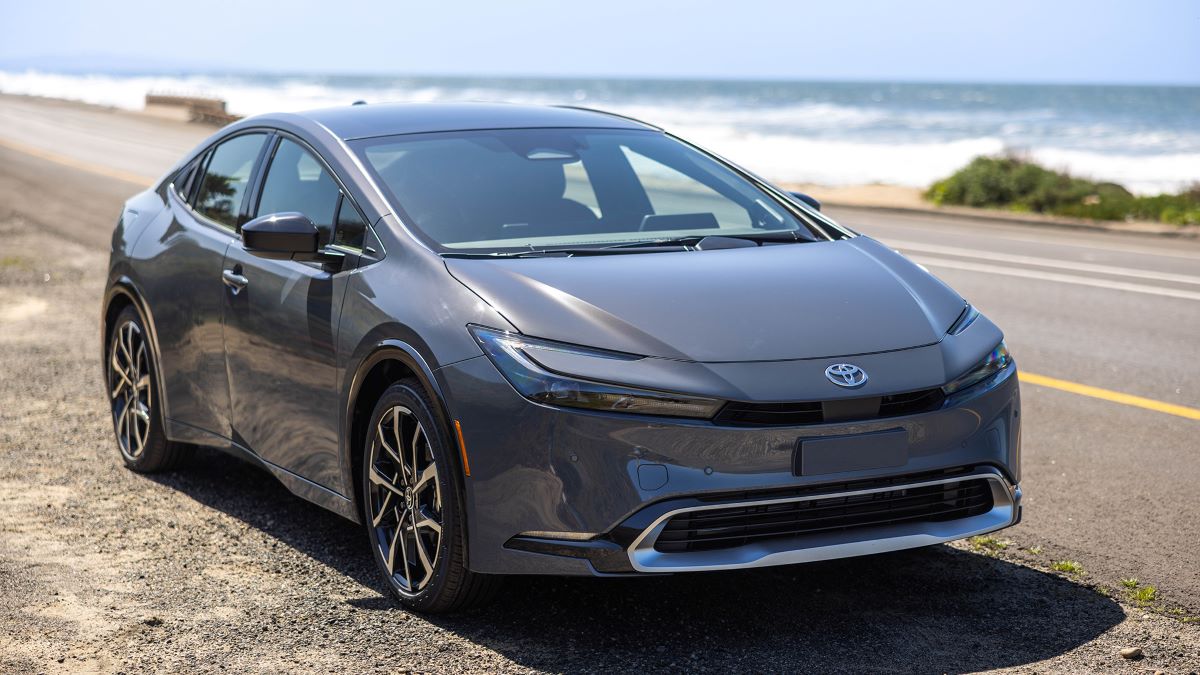
The standard Prius is powered by a 2.0-liter four-cylinder engine paired with an 83-kW motor generator that’s integrated into the hybrid’s eCVT automatic transmission. This setup delivers 194 horsepower in the front-wheel-drive (FWD) version, while the all-wheel-drive (AWD) variant, which includes a rear motor, bumps that figure slightly to 196 horsepower.
In contrast, the Prius Plug-In Hybrid (PHEV) employs a more powerful 120-kW motor generator alongside a 13.6-kWh battery. This configuration raises the total output to 220 horsepower, though this model is offered exclusively with FWD.
When it comes to fuel economy, the Prius XLE and Limited trims, equipped with larger 19-inch wheels, post the lowest figures in the lineup—though even these are impressive—offering “52/52 mpg city/highway with FWD and 49/50 mpg with AWD.”
The base LE model with FWD riding on 17-inch wheels stands out for its exceptional efficiency, being “rated at an impressive 57/56 mpg city/highway,” while the AWD version achieves “53/54 mpg” according to 2024 model year data. The Prius PHEV models also deliver strong fuel economy, but they bring an additional advantage: the ability to drive on electricity alone.
For the Plug-In Hybrid XSE and XSE Premium trims, that electric-only range extends “as far as 39 miles,” while the SE trim can go “as high as 44 miles” without using any gasoline. Altogether, the total driving range of the Prius Plug-In Hybrid can reach “as high as 600 miles.”
4. Mazda3
Why It’s Cheap to Own: Mazda3 delivers sporty handling and stylish looks without high ownership costs. It’s built with solid materials and requires few major repairs if maintained well.
While slightly pricier than a Corolla to insure, its long-term reliability helps offset that.
Ownership Perks:
- Fun driving experience
- Low mechanical failure rate
- Good fuel economy
Average 5-Year Ownership Cost: ~$32,000
Mazda has once again phased out the 2.0-liter engine from the base-model 3, a move last made by the automaker in 2019. As a result, the current Mazda 3 lineup now exclusively features 2.5-liter engines—both naturally aspirated and turbocharged inline-fours.
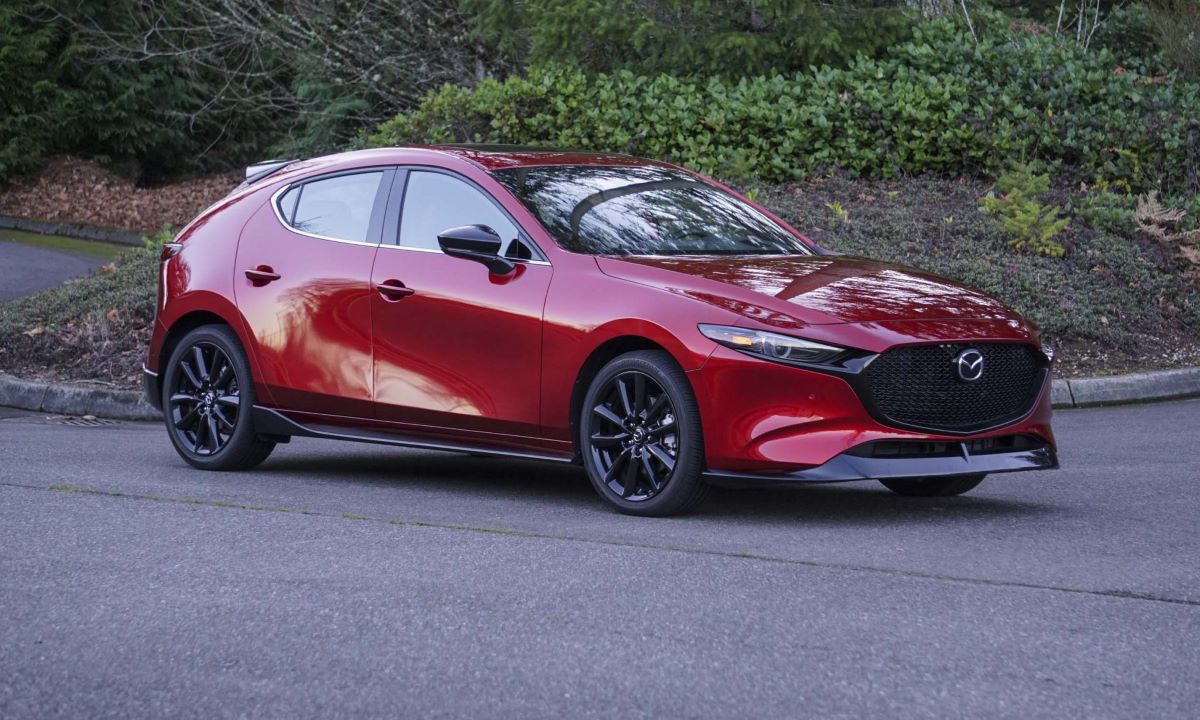
The naturally aspirated 2.5-liter engine receives a modest power increase, now generating 191 horsepower, a 5-horsepower gain over previous iterations. Torque output remains unchanged at 186 lb-ft.
As for the turbocharged version of the 2.5-liter engine, it continues to deliver 227 horsepower on regular fuel and up to 250 horsepower when running on premium, with torque figures of 310 lb-ft and 320 lb-ft respectively, also depending on the fuel grade.
Fuel economy has improved for the naturally aspirated 2.5-liter as well. For instance, the EPA rating for the front-wheel-drive hatchback version of the Mazda 3 has increased from “26/34 mpg city/highway on the 2022 model with FWD to 27/35.” Opting for all-wheel drive (AWD) sees an improvement from “25/31 to 26/33” mpg.
Transmission offerings remain mostly consistent across the lineup. The “2023 Mazda 3 hatchback FWD remains the only model with an available six-speed manual transmission,” while all other variants of the Mazda 3—including every AWD model—continue to come with the same six-speed automatic transmission.
Also Read: 5 Cars That Can Idle Forever and 5 That Overheat at Stoplights
5. Hyundai Elantra
Why It’s Cheap to Own: Hyundai has improved dramatically in recent years, and the Elantra is proof. With a long warranty, modern features, and low purchase price, it’s a budget-friendly choice.
Maintenance and repair costs are below average compared to its peers.
Ownership Perks:
- 10-year/100,000-mile powertrain warranty
- Affordable parts and repairs
- Low depreciation
Average 5-Year Ownership Cost: ~$30,500
The 2025 Hyundai Elantra is available in five primary trim levels: SE, SEL Sport, SEL Convenience, N Line, and Limited. While the Elantra Hybrid and the high-performance Elantra N are reviewed separately on Edmunds, the regular Elantra trims offer a range of features and performance options.
The SE, SEL Sport, SEL Convenience, and Limited trims are powered by a 147-horsepower 2.0-liter four-cylinder engine paired with a continuously variable automatic transmission (CVT) and front-wheel drive. The sporty N Line variant features a more powerful 201-hp turbocharged 1.6-liter engine and is equipped with a seven-speed dual-clutch automatic transmission.
The base SE trim starts things off with 15-inch alloy wheels, LED headlights, a height-adjustable driver’s seat, an 8-inch touchscreen, and Android Auto and Apple CarPlay smartphone integration with wireless connectivity.

A six-speaker audio system is also standard. All Elantra models come equipped with a comprehensive suite of driver-assist features, including forward collision mitigation, blind-spot warning with rear cross-traffic warning, lane keeping assistance, and driver attention warning.
Moving up, the SEL Sport trim adds more convenience features such as 16-inch wheels, keyless entry with push-button start, dual-zone automatic climate control, a 10.25-inch touchscreen with integrated navigation, a full digital gauge cluster display, a wireless smartphone charging pad, and rear USB ports.
The SEL Convenience trim builds on this by including adaptive cruise control, an enhanced forward collision mitigation system, 17-inch alloy wheels, a leather-wrapped steering wheel, heated front seats, and an improved voice recognition system.
The N Line trim introduces a sportier driving experience with 18-inch alloy wheels, unique front and rear fascias, black window trim and mirrors, dual-tip exhaust, sport front seats, steering wheel-mounted paddle shifters, and aluminum pedal trim.
At the top of the lineup, the Limited trim includes all of the SEL’s optional features and adds synthetic leather upholstery, a sunroof, a power-adjustable driver’s seat, parking sensors, a Bose premium audio system, rear automatic braking, and a surround-view camera system for enhanced visibility in tight spaces.
Each trim level of the 2025 Hyundai Elantra is designed to cater to a variety of preferences, from practical daily driving to sporty performance, offering buyers a well-rounded set of options to choose from.
6. Kia Forte
Why It’s Cheap to Own: Like its corporate cousin, the Hyundai Elantra, the Kia Forte offers low upfront costs and solid long-term value.

It’s practical and efficient, with few reliability complaints. Warranty coverage keeps major repair expenses off the owner’s plate for years.
Ownership Perks:
- Strong factory warranty
- Low maintenance frequency
- Competitive fuel economy
Average 5-Year Ownership Cost: ~$30,200
The Kia Forte presents itself as a sporty-looking compact sedan, but its true strength lies not in exhilarating performance, but in its wallet-friendly appeal. Despite its sharp, aggressive exterior design, the Forte prioritizes affordability and practicality over outright driving excitement.
It comes standard with a somewhat underwhelming 2.0-liter four-cylinder engine and front-wheel drive, which proves more than adequate for everyday commuting and city driving. However, for those seeking a more engaging experience behind the wheel, the GT model is worth considering.
This version enhances the car’s already stylish appearance and upgrades the powertrain to a turbocharged 1.6-liter four-cylinder engine. Buyers also get the option of pairing this engine with either a dual-clutch automatic transmission or a six-speed manual, adding a layer of performance-oriented character to the car.
While the turbocharged GT does provide extra power and liveliness, its chassis tuning doesn’t quite match the sharp dynamics of sportier compact sedans like the Volkswagen Jetta GLI or the Honda Civic Si.
That said, the Forte compensates with exceptional value across its lineup. It offers a generous array of standard features distributed among four attractive trim levels, all priced well below many competitors.
Further enhancing its appeal is Kia’s industry-leading powertrain warranty, which surpasses even those offered by luxury brands like BMW and Mercedes-Benz. Altogether, the Forte remains a compelling option for buyers seeking affordability, style, and strong warranty coverage in a compact sedan package.
7. Toyota Camry
Why It’s Cheap to Own: The Camry may be larger than the compact cars on this list, but it doesn’t cost much more to own.
It’s remarkably reliable, and the four-cylinder version is fuel-efficient. With minimal mechanical issues and high resale value, it’s a long-term winner.
Ownership Perks:
- Low breakdown rates
- High durability past 200,000 miles
- Solid safety and comfort features
Average 5-Year Ownership Cost: ~$33,000
For 2025, the Toyota Camry continues its legacy as a dependable midsize sedan, now offered exclusively as a hybrid and available in four trim levels: LE, SE, XSE, and XLE. Each variant comes equipped with a hybrid powertrain that delivers 225 horsepower with front-wheel drive, or 232 horsepower when paired with all-wheel drive. Here’s a breakdown of what each trim level brings to the table.

The LE serves as the entry point in the lineup and offers a well-rounded mix of comfort and technology. It comes equipped with 16-inch alloy wheels, LED headlights, push-button start, and dual-zone automatic climate control with rear vents for enhanced cabin comfort. Inside, it features an 8-inch infotainment touchscreen that supports wireless Apple CarPlay and Android Auto, along with a wireless charging pad for added convenience.
Standard safety features across the entire Camry lineup include a comprehensive suite of driver aids: forward collision mitigation with pedestrian detection, lane keeping assistance, adaptive cruise control with low-speed follow, and blind-spot warning with rear cross-traffic alert.
The SE builds on the LE’s foundation with a sportier character. It includes more aggressive exterior styling cues, 18-inch black alloy wheels, and a sport-tuned suspension that gives the Camry a more dynamic feel. Inside, the SE features synthetic leather upholstery, a leather-wrapped steering wheel with paddle shifters, a power-adjustable driver’s seat, and aluminum sport pedals, all of which emphasize its performance-inspired design.
8. Honda Fit
Why It’s Cheap to Own: Though no longer sold new in some markets, used Honda Fits are incredibly affordable to run.
This subcompact hatchback is versatile, reliable, and surprisingly roomy. The small engine means less spent on fuel and routine services.
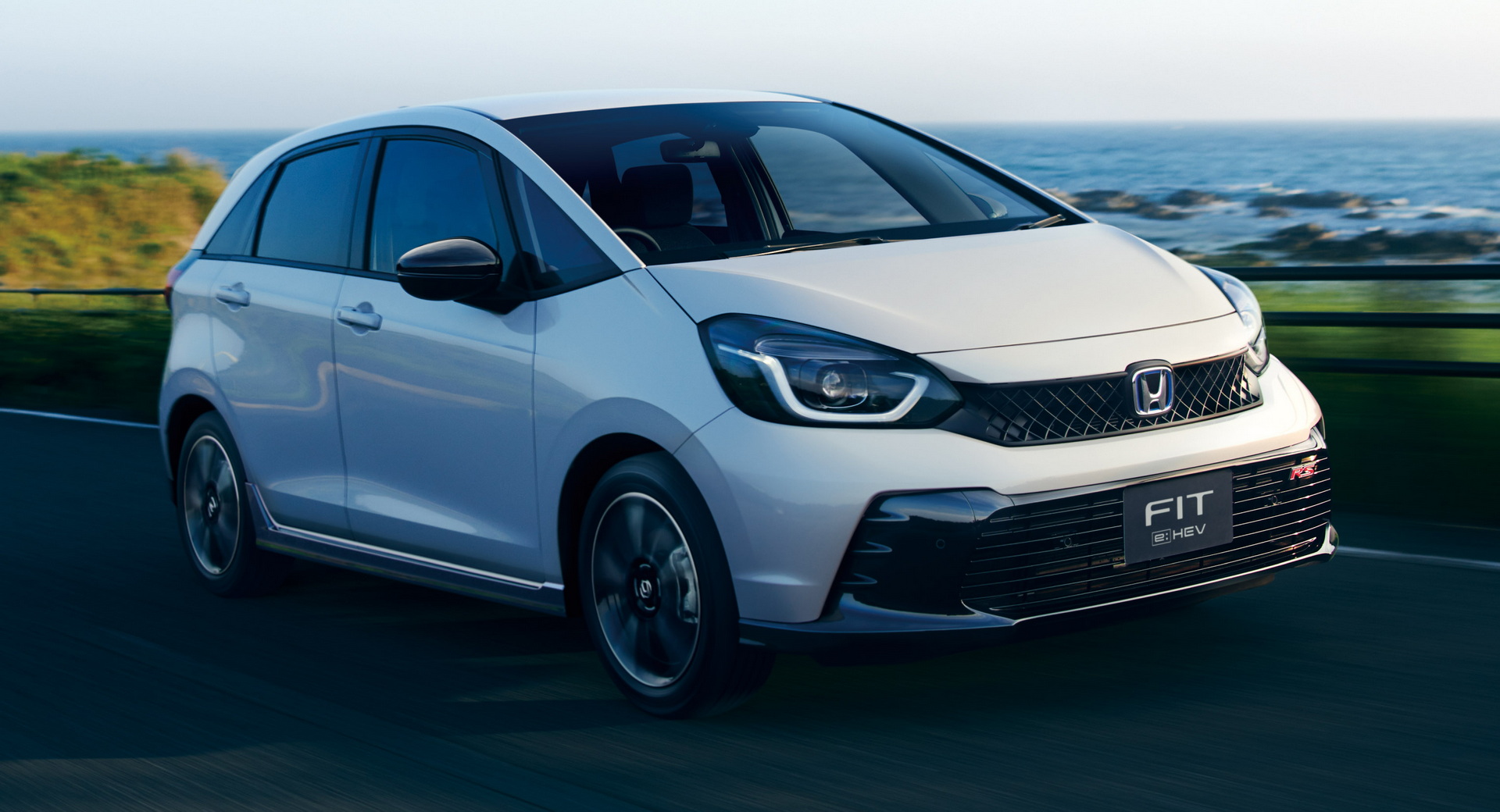
Ownership Perks:
- Excellent fuel economy
- Low-cost maintenance
- High reliability track record
Average 5-Year Ownership Cost: ~$29,000
9. Nissan Versa
Why It’s Cheap to Own: The Nissan Versa is among the cheapest new cars to buy, and it stays cheap to run.
It’s not the most refined vehicle, but it does the basics well: low fuel costs, cheap parts, and minimal maintenance. Ideal for budget-minded commuters.
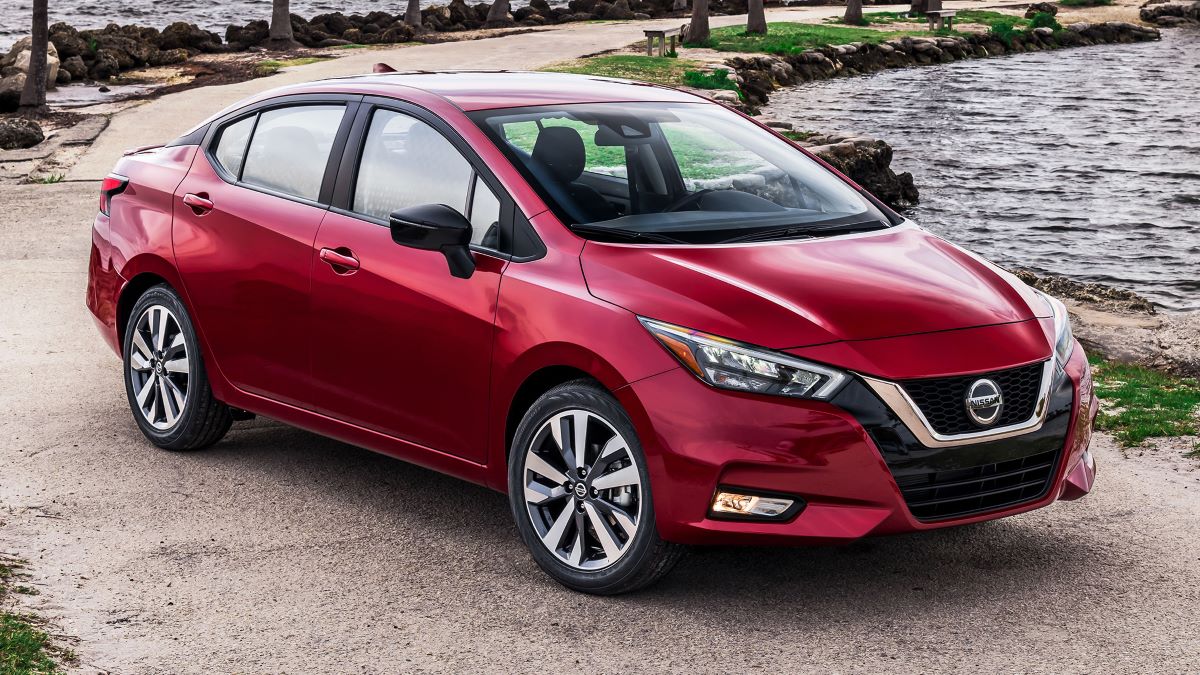
Ownership Perks:
- Low purchase price
- Simple design with few failure points
- Good gas mileage
Average 5-Year Ownership Cost: ~$28,500
Every Versa is powered by a 122-horsepower four-cylinder engine that sends power to the front wheels. The base models come equipped with a five-speed manual transmission by default, though buyers can opt for a continuously variable automatic transmission (CVT) on the S trim as well.
The CVT, however, is standard on the higher SV and SR trims. Although the Versa can feel sluggish when accelerating from a stop or attempting to pass on the highway, the CVT helps minimize harsh engine noise by simulating real gear changes.
The Versa we tested delivered a comfortable ride, effectively absorbing road imperfections. It also offered a noticeable improvement in driving dynamics over the previous generation, with more precise steering and predictable, responsive brake pedal feel.
10. Subaru Impreza
Why It’s Cheap to Own: Offering all-wheel drive as standard, the Subaru Impreza is a unique entry.
While AWD systems typically cost more to maintain, the Impreza’s reliability and safety make it a long-term value. Maintenance costs are slightly higher but offset by strong durability.
Ownership Perks:
- AWD for better resale and safety
- High reliability in newer models
- Reasonable fuel economy
Average 5-Year Ownership Cost: ~$33,500
The 2025 Subaru Impreza isn’t the most exhilarating compact car to drive, but it stands out as a practical, well-rounded daily driver. It delivers a relatively smooth ride and composed handling, even if it lacks the sharpness and engagement offered by some of its competitors. The engine lineup provides enough power for everyday use, but both options feel underpowered at times.
The base 2.0-liter four-cylinder produces 152 horsepower and 145 pound-feet of torque, which can feel sluggish, especially under hard acceleration. The available 2.5-liter four-cylinder boosts output to 182 horsepower and 178 pound-feet of torque, offering quicker acceleration that better suits everyday driving needs, though it’s still far from sporty.
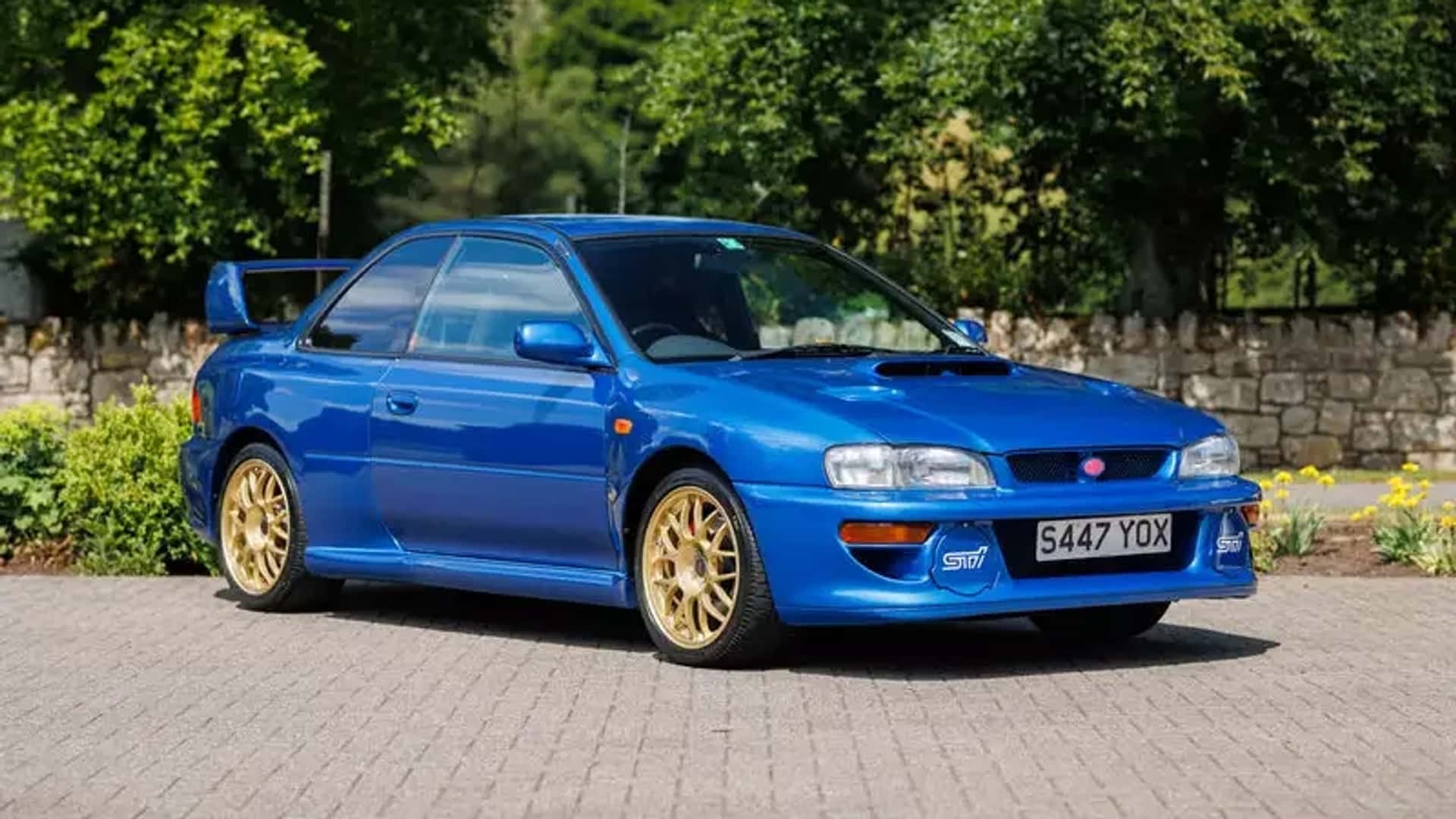
Both engines are paired with a continuously variable automatic transmission (CVT) that can be a bit rough and slow to respond. However, Subaru’s standard all-wheel drive gives the Impreza a traction advantage over many rivals.
When it comes to fuel economy, the 2025 Impreza earns an EPA-estimated 27 mpg in the city and 34 mpg on the highway, which is solid for a car with standard all-wheel drive.
The RS trim, equipped with the more powerful 2.5-liter engine, sees slightly lower figures at 26 mpg city and 33 mpg highway. While the Impreza is efficient for an AWD vehicle, its fuel economy still trails that of many front-wheel-drive competitors in the compact car segment.
Inside, the Impreza offers a no-frills cabin that’s practical, spacious, and well-built, but not particularly luxurious. The interior design is simple and lacks premium materials or flashy styling, yet it gets the job done for daily commuting. Seating for five is standard, and while the front seats are more comfortable, rear passengers won’t be cramped thanks to a generous 36.5 inches of legroom.
Cargo space is another strong point: the hatchback body style provides 20.4 cubic feet behind the rear seats and up to 56 cubic feet when those seats are folded down. This makes the Impreza more versatile than many rivals, including the Mazda3, and helps reinforce its appeal as a practical, budget-friendly choice.
When evaluating a vehicle, long-term ownership costs are often more important than just the purchase price. The cars on this list offer a balance of low fuel expenses, minimal repairs, high reliability, and strong resale value.
Whether you’re looking for a daily commuter or a family sedan, these models are excellent choices for cost-conscious buyers looking to minimize their automotive expenses over time.

